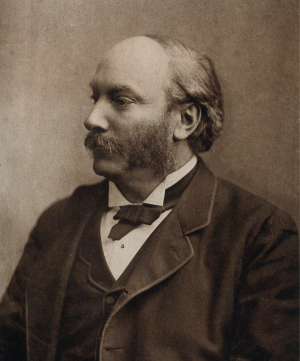
Gareth McKinley discusses the physical interpretation that lies behind the dimensionless parameters that are so widely used by engineers.
“I have often been impressed by the scanty attention paid even by original workers in physics to the great principle of similitude”, wrote Lord Rayleigh (pictured) in Nature in 1915 1 . Rayleigh would take pleasure in knowing that the principles of what we now refer to as dynamical similarity are central to what chemical engineers, physicists and others do; they also underpin modern praxis such as design of experiments (DoE), which can enable substantial dimensionality reduction in the required scope of empirical measurement programs.

Many of the principles behind dimensional analysis were first introduced by Rayleigh in his Theory of Sound, but then formally laid out independently by Vaschy (1892) and Riabouchinsky (1911), before being codified in the eponymous Pi theorem of Edgar Buckingham in 1914 2 . Chemical engineering students often encounter these ideas in introductory classes in transport phenomena, but as Rayleigh remarks, the governing ideas can be applied fruitfully to make order-of-magnitude analyses of a wide range of research challenges. In a series of Harvard lectures, the future Nobel Prize winner P. W. Bridgman noted, “it is desirable that every physicist should have this method of analysis at his command” 3 . Very readable modern introductions are provided for fluid mechanicians 4 , chemical engineers 5 , as well as more generally 2,6 .
Dimensional analysis provides a powerful and unambiguous way of querying (and ultimately answering) someone who blithely says, “oh, that effect is small and negligible”. As I tell students, to be meaningful and robust, the correct retort to such statements is “small compared to what?”. The dimensionless Pi (or product) groups that arise naturally from applying Buckingham’s theorem are dimensionless ratios of driving forces, timescales, or other ratios of physical quantities, and they enable us to safely neglect certain physical complications as we seek to unravel the key physics behind any new problem.
The classic example is the Reynolds number Re = ρVD/μ (with ρ and μ the fluid density and viscosity, while V and D are the velocity and length scale of interest); this is more insightfully recognized as a dimensionless ratio of dynamic pressure (~ρV 2 ) to viscous stress (~μV/D) that arises naturally when non-dimensionalizing the Navier–Stokes equation. Extensive lists of the key dimensionless groups in many transport problems have been tabulated 7 , but their physical interpretation is often overlooked. It is good practice when encountering new dimensionless groupings to ask what quantities are being ratioed (while remembering that products of dimensionless groups are also dimensionless; for example, the Péclet number is a product of the Reynolds and Prandtl numbers, that is, Pe = RePr). Many of the heat transfer correlations available for different geometries become far more comprehensible when viewed this way.
A key subset of dimensionless groups are ‘intrinsic’ quantities that do not depend at all on the flow dynamics, but instead provide understanding of the relative magnitudes of different physical phenomena in a fluid of interest. For example, the Prandtl number Pr = μCp /k (with Cp and k the specific heat and thermal conductivity) helps distinguish liquid metals (Pr ≪ 1) from water (Pr ≈ 7) from viscous oils (Pr ≫ 1). A particularly useful grouping in studies of free surface flows, such as ink-jetting and droplet spreading, is the Ohnesorge number \(>=\mu /<(\rho \sigma D)>^>\) that embodies — in a single group — the relative magnitudes of viscous, inertial and capillary forces (where σ is the interfacial tension) 8 . In Oh ≪ 1 flows, inertia and capillarity dominate, leading to splashing events and polydisperse sprays of droplets, whereas at Oh > 1, puddles and long, thin threads dominate the dynamics. Achieving true dynamical similarity in scale models of free surface flows (so that the values of Re and Oh in the lab match those of relevance in the real world) can be extremely challenging — and it is this visual clue that tells us what is amiss in old monster and disaster movies. Often, CGI is required to get all dimensional scales correct. Interestingly, setting Oh = 1 and solving for the value of D gives a unique characteristic value Dc = μ 2 /(ρσ) for any given fluid (about 13 nm for water). On this length scale, inertial, viscous and capillary effects are all equally important. This length scale, plus associated definitions of mass and time, construct an internally consistent system of units, recently christened ‘Ohnesorge units’, that allows unification of many problems in “a world governed by viscosity, surface tension and density” 9 . These scales play the same role as the Planck units of quantum physics and cosmology 10 , but on scales of relevance to engineers and our everyday life.